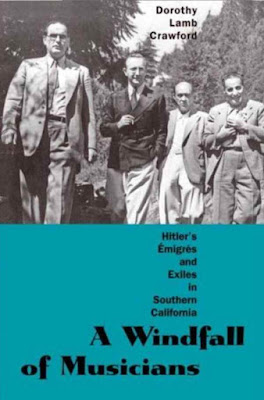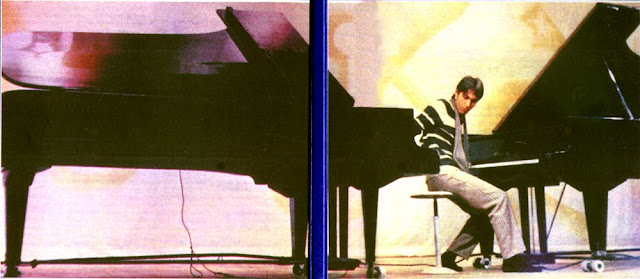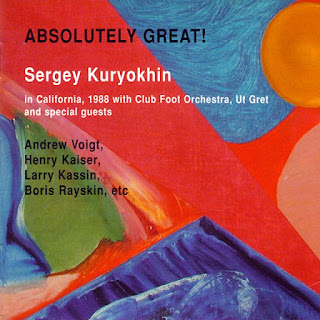Skip to Stravinsky: Computerized
Skip to Stravinsky: Out to Stud
I ran across a Time Magazine cover from July 26, 1948 featuring Igor Stravinsky.
It shows Igor's disembodied head and neck over a piano keyboard with a firebird whose body seems to have holes like a flute. There's also a bear and a clown. I wonder if his face increased news stand sales.
You can read the entire Stravinsky cover story at Time Magazine's Archive. Here are some random quotes:
After the Rite of Spring: If Stravinsky had never put another eighth note on paper, he would still have been a greater innovator than Jean Sibelius, now 82, and Richard Strauss, 84, both of whom barely got into the century musically.
In the years since The Rite, Stravinsky has turned out some 60 works . . . All are as precisely and beautifully made as a fine watch—and, say his critics, most are about as emotional.
A U.S. citizen since 1945, he likes to be known as a "California composer."
He usually eats breakfast on the sunny red-tiled loggia, practically naked ("not just in shorts, but often just wearing a handkerchief or something," says Vera).Here's another story about near nudity at a composer's home told by Steve Martin.
Apparently Time Magazine hasn't put a composer on its cover for over twenty years. But at one time composers appeared with some regularity. Here's the list, as best I could discover from their archives, of Time's cover composers (and a few conductors) plus the year of their non-covert appearance.
- Fritz Kreisler (1925)
- George Gershwin (1925)
- Pietro Mascagni (1926)
- Richard Strauss (1927)
- Leopold Stokowski (1930)
- Joseph Deems Taylor (1931)
- Noel Coward (1933)
- George M. Cohan (1933)
- Irving Berlin (1934)
- Jean Sibelius (1937)
- Richard Strauss (1938)
- Rogers and Hart (1938)
- Ignace Paderewski (1939)
- Sergei Prokofiev (1945)
- Oscar Hammerstein II (1947)
- Benjamin Britten (1948)
- Igor Stravinsky (1948)
- Cole Porter (1949)
- Gian-Carlo Menotti (1950)
- David (sic) Brubeck (1954)
- Leonard Bernstein (1957)
- Lerner & Loewe (1960)
- J.S. Bach (1968)
- Mistislav Rostropovich (1977)
- Andrew Lloyd Webber (1988)
Stravinsky: Computerized
Someone named Jay Bacal has realized Stravinky's The Rite of Spring on a computer. The project was designed to show off a $12,460 collection of nearly 800,000 sampled sounds called the Vienna Symphonic Library. (Go ahead, buy your own copy of the library here. Everyone should have one.)
This took a lot of time to create and it sounds remarkably good - good enough that you can listen to it and think about how Stravinsky's music is being interpreted rather than to the limitations of the computer. If you crank the volume and listen critically you'll notice giveaways - like moments when the horns in the high register sound just like a pipe organ. Most people will have no trouble suspending their disbelief. Orchestra purists and players will feel threatened. To them I say "Welcome to the club."
Visit this page at the Vienna website to hear for yourself. You can stream the piece or choose mp3 or 24-bit wav file formats to download. Also available are the midi files themselves.
OR better yet, here's a YouTube video showing the first 8 minutes scrolling by on a computer screen. Three other sections are on YouTube somewhere.
Via a link from that VSL page, Jay Bacal describes his working method. One paragraph jumped out at me because it coincides exactly with my experiences composing on a computer.
This is absolutely an issue for anyone creating music on a computer. By "creating music" I don't mean composing music which will be performed later by live musicians. I do mean a process where the final result is a sound file output from the computer, ready for listening. No live musicians - or live anything - is involved.The final challenge for me in the process was deciding when the project was officially done. Every time I listened to my performance, something seemed too fast or too loud, or too wet or too mechanical. The finish line kept moving into the future. But eventually I just had to force myself to say – it’s done.
Every detail of such a file is there in the computer ready to be changed - and I do mean EVERY detail. After each change, no matter how small, further listening in context is required to determine if that change is really helpful. The smallest changes have an annoying habit of jumping out of the mix and distracting a listener. Eons can be wasted obsessing over small things which no one will ever notice.
There's a big difference between recreating a familiar piece and creating an entirely new one. Bacal had Stravinsky's score and innumerable recordings of the The Rite for reference. Even from within the deep dark forest of multi-faceted sound (Is it too fast? Too loud? Too wet? Too salty?) he didn't have to worry about whether the Rite of Spring would sound better if the melodies or harmonies or rhythms were altered (Is it too long? Too short? Too complex? Too ugly?).
And Bacal certainly didn't have to think about formal structure. Stravinsky did that already; everyone agrees Rite of Spring is a good piece the way it is. Not to say someone couldn't remix it - alter the music itself, reshuffle the sections, etc - to produce an even better piece. Maybe I should take Bacal's midi file and run it through Sibelius' random pitch generator. Hmmm? Cool.
I wonder why so much energy of the marketplace goes into using our vast computer capabilities to reproduce the sound of a symphony orchestra. Orchestras still exist even if their audiences aren't much interested in new things. Once composers pay for the entire 800,000 samples plus the equipment to use them and spend months on a short piece of music, are they saving any money over hiring an orchestra to record the music? If it's just a background score for a TV show or cheap movie, will anyone notice the difference?
Someday, I hope, virtual orchestras will be geared not so much towards recreating but instead towards fostering new things which can't exist anywhere else. Wendy Carlos' Switched-On recordings seem technically antiquarian by today's standards but they did actually suggest new ways of thinking about Baroque music. That's a lot more than Jay Bacal has done for Stravinsky. Can we please stop asking ourselves if computer generated audio sounds like real performance and instead start figuring out what nifty new stuff this musical instrument can do?
Thanks to John Steinmetz for alerting me to this recording. You probably won't have enough time to read an early MM post about listening to The Rite of Spring while driving. Or this other MM post about the ecstasy of hearing Esa-Pekka Salonen lead the LA Phil in The Rite of Spring in Disney's hall (plus pictures of dinosaurs from Disney's movies).
Stravinsky: Out To Stud
This Stravinsky is a horse. A race horse. Apparently a very good race horse although he no longer races. He's found a new line of work - he's a stud. His owners charge $35,000 for his, um, services. Read about Stravinsky here.
In articles about Stravinsky I noticed other musical horse names: for example Mozart and Miss Scarlatti. And, believe it or not, a horse named DoReMiFaSaLaTiDo. Sa?
Igor Tags: Igor Stravinsky. . . Time Magazine. . . cover story. . . Vienna Symphonic Library. . . Rite of Spring. . . virtual orchestra. . . horse racing. . . stud service



















